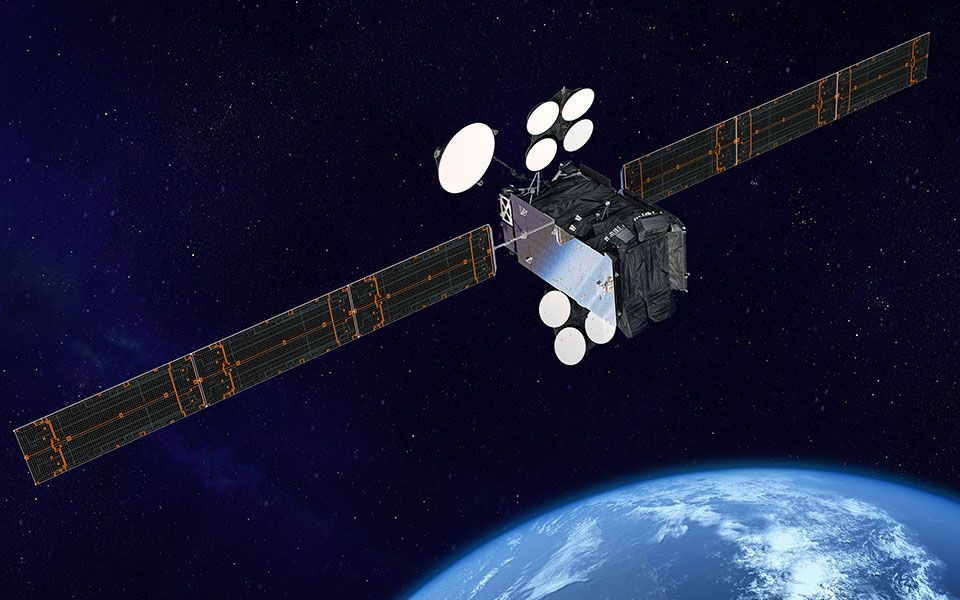A TV satellite is about to explode following 'irreversible' battery damage
Plans have been OK'ed to move it to that great graveyard in the sky before exploding.

Following an unexplained accident, a satellite built by Boeing and operated by DirecTV is at risk of exploding in the coming weeks. To mitigate potential damage to other satellites, the U.S. government will allow the satellite TV provider to move the doomed craft to a higher orbit ahead of schedule.
The satellite, called Spaceway-1, has been orbiting some 22,000 miles (35,400 kilometers) above Earth since 2005, providing high-definition television coverage for many years before being demoted to a backup satellite. (Currently, it is not providing any coverage for customers.)
In December 2019, the craft experienced a "major anomaly" that resulted in "irreversible thermal damage" to its batteries, DirecTV officials wrote last week in a filing to the U.S. Federal Communications Commission (FCC). While Spaceway-1 has relied on its solar panels for power in recent months, the craft will soon enter its "eclipse season" — a period when the satellite hovers in Earth's shadow — and the batteries must be activated. When this season begins on Feb. 25, company representatives wrote, the damaged batteries will likely explode upon activation, destroying the satellite and putting other nearby satellites at risk.
Related: The Top 10 Greatest Explosions Ever
The satellite follows a geostationary orbit (meaning it appears to stay put over one particular part of Earth as it rotates), which is the highest orbit possible for in-use satellites. Because of the craft's high location, redirecting the craft downward — where other in-use satellites are circling — so that it may eventually burn up in the atmosphere is not a viable option. Instead, on Jan. 19, DirecTV requested that the FCC allow the company to relocate the satellite to a higher orbit known as the "graveyard orbit," roughly 185 miles (300 km) above its current path, where, hopefully, Spaceway-1 can explode in peace.
Normally, decommissioning a satellite involves releasing all of the satellite's remaining propellant — a process that can take months, depending on how much fuel is left in the tank. Spaceway-1 doesn't have months to spare; according to the FCC filing, there's only enough time to release a "nominal" amount of the satellite's remaining fuel if the craft is to be moved to that great graveyard in the sky before exploding.
The FCC approved DirecTV's request to decommission Spaceway-1 ahead of schedule and gave the company a waiver to ignore the propellant-depletion rule. According to AT&T, the parent company of DirecTV, the soon-to-explode satellite "is a backup and we do not anticipate any impacts on consumer service as we retire it."
Sign up for the Live Science daily newsletter now
Get the world’s most fascinating discoveries delivered straight to your inbox.
RIP, Spaceway-1. May your broken body rust in peace in the quiet of space.
- Radiation Will Tear Elon Musk's Rocket Car to Bits in a Year
- Satellites Gallery: Science from Above
- Iconic Images of Earth from Space
Originally published on Live Science.


Brandon is the space/physics editor at Live Science. His writing has appeared in The Washington Post, Reader's Digest, CBS.com, the Richard Dawkins Foundation website and other outlets. He holds a bachelor's degree in creative writing from the University of Arizona, with minors in journalism and media arts. He enjoys writing most about space, geoscience and the mysteries of the universe.











